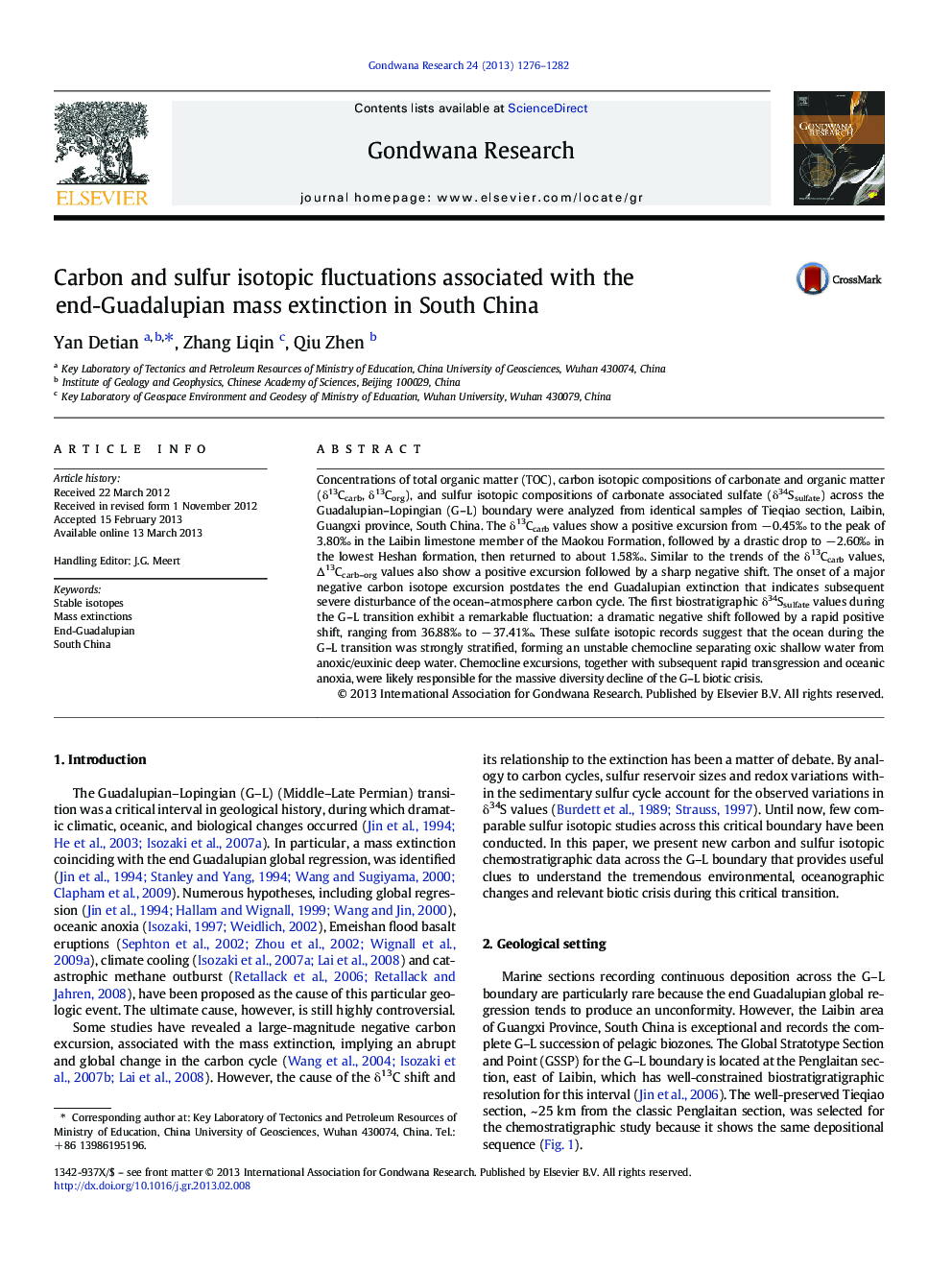| Article ID | Journal | Published Year | Pages | File Type |
|---|---|---|---|---|
| 4726931 | Gondwana Research | 2013 | 7 Pages |
•High-resolution carbon and sulfur isotope records across the G-L transition.•The Guadalupian ocean was stratified and the deep water was anoxic.•Chemocline excursions, together with transgression account for extinction.
Concentrations of total organic matter (TOC), carbon isotopic compositions of carbonate and organic matter (δ13Ccarb, δ13Corg), and sulfur isotopic compositions of carbonate associated sulfate (δ34Ssulfate) across the Guadalupian–Lopingian (G–L) boundary were analyzed from identical samples of Tieqiao section, Laibin, Guangxi province, South China. The δ13Ccarb values show a positive excursion from − 0.45‰ to the peak of 3.80‰ in the Laibin limestone member of the Maokou Formation, followed by a drastic drop to − 2.60‰ in the lowest Heshan formation, then returned to about 1.58‰. Similar to the trends of the δ13Ccarb values, Δ13Ccarb–org values also show a positive excursion followed by a sharp negative shift. The onset of a major negative carbon isotope excursion postdates the end Guadalupian extinction that indicates subsequent severe disturbance of the ocean–atmosphere carbon cycle. The first biostratigraphic δ34Ssulfate values during the G–L transition exhibit a remarkable fluctuation: a dramatic negative shift followed by a rapid positive shift, ranging from 36.88‰ to − 37.41‰. These sulfate isotopic records suggest that the ocean during the G–L transition was strongly stratified, forming an unstable chemocline separating oxic shallow water from anoxic/euxinic deep water. Chemocline excursions, together with subsequent rapid transgression and oceanic anoxia, were likely responsible for the massive diversity decline of the G–L biotic crisis.
Graphical abstractFigure optionsDownload full-size imageDownload as PowerPoint slide
